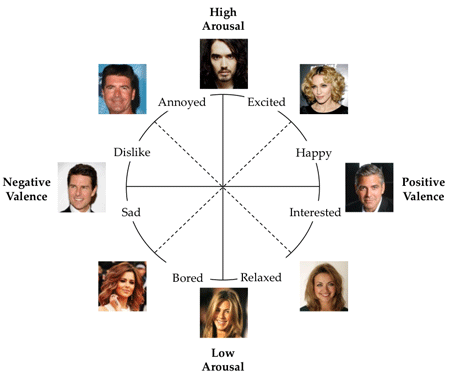What is an Ad’s Emotional Core?
Posted: 18/09/2014

Most ad tests include measures of emotion. But given the complexity of human emotion, we question the robustness of existing approaches and present the first part of a more reliable framework.
Our emotional response to an advert – that warm flush of happiness on seeing a child unwrapping his new tricycle on a snowy Christmas morning or wanting to throw your shoe at the TV when Carol Vorderman turns up to plug debt consolidation – is understandably important to brand managers. That’s why most ad tests include some form of emotional response. But, given the complexity of human emotion, do the existing measures work? For example, what faith should we put in systems which feel either ad-hoc or, in one provider’s case, date back to the reign of Queen Victoria and contain “primary” emotions like sadness, fear and disgust but omit amusement, excitement and boredom?
The psychology of emotion has clearly developed since the 19th century. In an excellent summary published in 2003, James Russell, a prominent researcher in the field, describes how all emotions can be de-constructed into an immediate “core” affect and a subsequent cognitive interpretation to yield an “experienced” emotion. Essentially, when your pulse quickens with a core emotion, you identify the cause – whether it’s a smile from a stranger across the bar or the unwelcome approach of an axe-waving Visigoth – to then construe either passion, fear or something else.
Core Affect

Let’s defer the discussion of experienced emotion and focus on core. The figure shows how this can be characterised by the adrenaline (“arousal”) and the agreeableness or unpleasantness (“valence”) involved. These two basic biological reactions operate independently to generate the mixtures shown in the diagram. Note how negative valence and high arousal could be associated with irritation, fear or disgust. These are all different experienced emotions with the same core affect.
So core affect is the simple, central feature of all emotion and any credible testing framework should, at a minimum, diagnose where each advert sits on this circle. To illustrate this in practice we asked people to evaluate how they felt about various celebrities. They aroused positive reactions to Madonna, but negative ones to Simon Cowell (so far, so good). And people have strong feelings about Russell Brand, but can’t decide whether they like him or hate him. Whilst he’s clearly popular, it’s also not hard to see what many find so irritating about a man who might ask for a cup of coffee by saying: “Sirrah, me old mucker, prithee provide me forsooth a receptacle brimming with hot-steeped Arabica beans borne from Brazil, enriched with the old Tate & Lyle granulated”. Is it any wonder they chose that nice Mr. Clooney to do the Nespresso ads?
Russell, J.A. (2003). Core affect and the psychological construction of emotion. Psychological Review, 110 (1), 145-172.